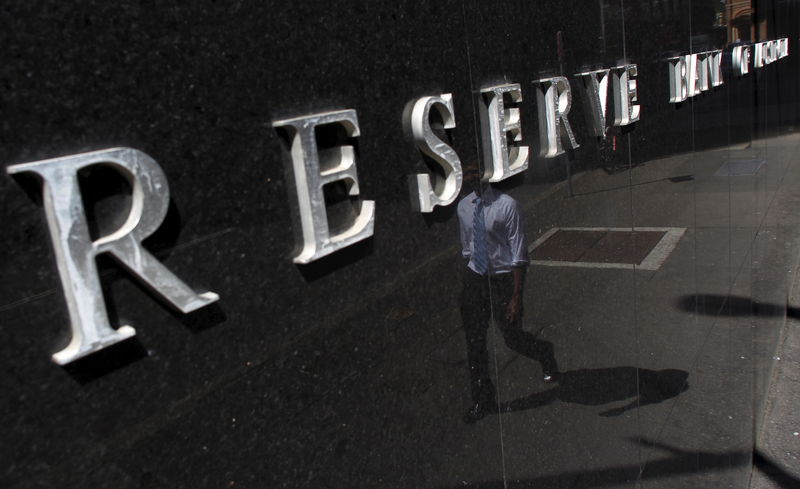
© Reuters.
AXJO
+1.20%
Add to/Remove from Watchlist
Add to Watchlist
Add Position
Position added successfully to:
Please name your holdings portfolio
Type:
BUY
SELL
Date:
Amount:
Price
Point Value:
Leverage:
1:1
1:10
1:25
1:50
1:100
1:200
1:400
1:500
1:1000
Commission:
Create New Watchlist
Create
Create a new holdings portfolio
Add
Create
+ Add another position
Close
AUD/USD
+0.41%
Add to/Remove from Watchlist
Add to Watchlist
Add Position
Position added successfully to:
Please name your holdings portfolio
Type:
BUY
SELL
Date:
Amount:
Price
Point Value:
Leverage:
1:1
1:10
1:25
1:50
1:100
1:200
1:400
1:500
1:1000
Commission:
Create New Watchlist
Create
Create a new holdings portfolio
Add
Create
+ Add another position
Close
Investing.com — The Reserve Bank of Australia kept interest rates on hold as expected on Tuesday, citing the need for more macroeconomic data to spur another rate decision, but warned that risks from high inflation still remained in play.
In its final meeting for 2023, the RBA kept its official cash target rate at 4.35%, as widely expected. The bank had hiked rates by 25 basis points in October, citing a recent uptick in inflation. While price pressures have cooled somewhat since then, consumer price index inflation still remains well above the RBA’s 2%-3% annual target range, and is only expected to fall within the range by mid-to-late 2025.
RBA Governor Michele Bullock said in a note that there were still “significant uncertainties” around the outlook on inflation, particularly that high global services price inflation could spill over into Australia.
She also noted that while the economy had cooled under high interest rates, it still remained largely resilient, which presented more upside risks to inflation.
Bullock reiterated the RBA’s data-driven approach to future monetary policy decisions. The Australian dollar slid 0.7% after the rate decision, given that the RBA offered no tangible cues on future rate decisions.
“Higher interest rates are working to establish a more sustainable balance between aggregate supply and demand in the economy. The impact of the more recent rate rises, including last month’s, will continue to flow through the economy,” Bullock said.
The RBA governor had repeatedly warned of potential stickiness in inflation, especially due to resilient demand for goods and services. While retail spending also cooled somewhat this year, it remained near record levels in October.
Analysts at Westpac had forecast that the RBA will keep rates steady in December, and will be better positioned to make a rate decision in its February meeting.
Third-quarter gross domestic product data is due later in the week, although an unexpected current account deficit and a sharp drop in exports bode poorly for the reading.
The RBA hiked rates by a cumulative 425 basis points since mid-2022, as it moved to curb a post-COVID spike in inflation. A bulk of these hikes were enacted under then Governor Philip Lowe, whose tenure ended in September 2023.
His successor, Bullock, will oversee a string of changes for the central bank through 2024, including an overhaul of the bank’s meeting schedules, as well as the implementation of measures giving the bank more autonomy in its operations.
Source: Investing.com


























